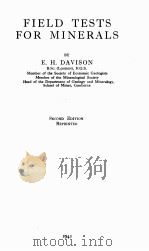《FIELD AND WAVE ELECTROMAGNETICS SECOND EDITION》
| 作者 | DAVID K.CHENG 编者 |
|---|---|
| 出版 | ADDISON-WESLEY PUBLISHING COMPANY |
| 参考页数 | 703 |
| 出版时间 | 1989(求助前请核对) 目录预览 |
| ISBN号 | 无 — 求助条款 |
| PDF编号 | 818032368(仅供预览,未存储实际文件) |
| 求助格式 | 扫描PDF(若分多册发行,每次仅能受理1册) |

1The Meebromagnetic Model1
1-1Introduction1
1-2 The Electromagnetic Model3
1-3 SI Units and Universal Constants8
Review Questions10
2Vector Analysis11
2-1Introduction11
2-2 Vector Addition and Subtraction12
2-3Products of Vectors14
2-3.1 Scalar or Dot Product14
2-3.2 Vector or Cross Product16
2-3.3 Product of Three Vectors18
2-4Orthogonal Coordinate Systems20
2-4.1 Cartesian Coordinates23
2-4.2 Cylindrical Coordinates27
2-4.3 Spherical Coordinates31
2-5 Integrals Containing Vector Functions37
2-6 Gradient of a Scalar Field42
2-7 Divergence of a Vector Field46
2-8 Divergence Theorem50
2-9 Curl of a Vector Field54
2-10 Stokes’s Theorem58
2-11Two Null Identities61
2-11.1 Identity Ⅰ61
2-11.2 Identity Ⅱ62
2-12 Helmholtz’s Theorem63
Review Questions66
Problems67
3Static Electric Fields72
3-1Introduction72
3-2 Fundamental Postulates of Electrostatics in Free Space74
3-3Coulomb’s Law77
3-3.1 Electric Field Due to a System of Discrete Charges82
3-3.2 Electric Field Due to a Continuous Distribution of Charge84
3-4 Gauss’s Law and Applications87
3-5Electric Potential92
3-5.1 Electric Potential Due to a Charge Distribution94
3-6 Conductors in Static Electric Field100
3-7Dielectrics in Static Electric Field105
3-7.1 Equivalent Charge Distributions of Polarized Dielectrics106
3-8Electric Flux Density and Dielectric Constant109
3-8.1 Dielectric Strength114
3-9 Boundary Conditions for Electrostatic Fields116
3-10Capacitance and Capacitors121
3-10.1 Series and Parallel Connections of Capacitors126
3-10.2 Capacitances in Multiconductor Systems129
3-10.3 Electrostatic Shielding132
3-11Electrostatic Energy and Forces133
3-11.1 Electrostatic Energy in Terms of Field Quantities137
3-11.2 Electrostatic Forces140
Review Questions143
Problems145
4Solution of Electrostatic Problems152
4-1 Introduction152
4-2 Poisson’s and Laplace’s Equations152
4-3 Uniqueness of Electrostatic Solutions157
4-4Method of Images159
4-4.1 Point Charge and Conducting Planes161
4-4.2 Line Charge and Parallel Conducting Cylinder162
4-4.3 Point Charge and Conducting Sphere170
4-4.4 Charged Sphere and Grounded Plane172
4-5 Boundary-Value Problems in Cartesian Coordinates174
4-6 Boundary-Value Problems in Cylindrical Coordinates183
4-7 Boundary-Value Problems in Spherical Coordinates188
Review Questions192
Problems193
5Steady Electric Currents198
5-1Introduction198
5-2 Current Density and Ohm’s Law199
5-3 Electromotive Force and Kirchhofl’s Voltage Law205
5-4 Equation of Continuity and Kirchhofl’s Current Law208
5-5 Power Dissipation and Joule’s Law210
5-6 Boundary Conditions for Current Density211
5-7 Resistance Calculations215
Review Questions219
Problems220
6Static Magnetic Fields225
6-1 Introduction225
6-2 Fundamental Postulates of Magnetostatics in Free Space226
6-3 Vector Magnetic Potential232
6-4 The Biot-Savart Law and Applications234
6-5The Magnetic Dipole239
6-5.1 Scalar Magnetic Potential242
6-6Magnetization and Equivalent Current Densities243
6-6.1 Equivalent Magnetization Charge Densities247
6-7 Magnetic Field Intensity and Relative Permeability249
6-8 Magnetic Circuits251
6-9 Behavior of Magnetic Materials257
6-10 Boundary Conditions for Magnetostatic Fields262
6-11 Inductances and Inductors266
6-12Magnetic Energy277
6-12.1 Magnetic Energy in Terms of Field Quantities279
6-13Magnetic Forces and Torques281
6-13.1 Hall Effect282
6-13.2 Forces and Torques on Current-Carrying Conductors283
6-13.3 Forces and Torques in Terms of StoredMagnetic Energy289
6-13.4 Forces and Torques in Terms of Mutual Inductance292
Review Questions294
Problems296
7Timne-Varying Fields and Maxwell’s Equations307
7-1Introduction307
7-2Faraday’s Law of Electromagnetic Induction308
7-2.1 A Stationary Circuit in a Time-Varying Magnetic Field309
7-2.2 Transformers310
7-2.3 A Moving Conductor in a Static Magnetic Field314
7-2.4 A Moving Circuit in a Time-Varying Magnetic Field317
7-3Maxwell’s Equations321
7-3.1 Integral Form of Maxwell’s Equations323
7-4 Potential Functions326
7-5Electromagnetic Boundary Conditions329
7-5.1 Interface between Two Lossless Linear Media330
7-5.2 Interface between a Dielectric and aPerfect Conductor331
7-6Wave Equations and Their Solutions332
7-6.1 Solution of Wave Equations for Potentials333
7-6.2 Source-Free Wave Equations334
7-7Time-Harmonic Fields335
7-7.1 The Use of Phasors—A Review336
7-7.2 Time-Harmonic Electromagnetics338
7-7.3 Source-Free Fields in Simple Media340
7-7.4 The Electromagnetic Spectrum343
Review Questions346
Problems347
8Plane Electromagnetic Waves354
8-1 Introduction354
8-2Plane Waves in Lossless Media355
8-2.1 Doppler Eflect360
8-2.2 Transverse Electromagnetic Waves361
8-2.3 Polarization of Plane Waves364
8-3Plane Waves in Lossy Media367
8-3.1 Low-Loss Dielectrics368
8-3.2 Good Conductors369
8-3.3 Ionized Gases373
8-4 Group Velocity375
8-5Flow of Electromagnetic Power and the Poynting Vector379
8-5.1 Instantaneous and Average Power Densities382
8-6 Normal Incidence at a Plane Conducting Boundary386
8-7Oblique Incidence at a Plane Conducting Boundary390
8-7.1 Perpendicular Polarization390
8-7.2 Parallel Polarization395
8-8 Normal Incidence at a Plane Dielectric Boundary397
8-9Normal Incidence at Multiple Dielectric Interfaces401
8-9.1 Wave Impedance of the Total Field403
8-9.2 Impedance Transformation with Multiple Dielectrics404
8-10Oblique Incidence at a Plane Dielectric Boundary406
8-10.1 Total Reflection408
8-10.2 Perpendicular Polarization411
8-10.3 Parallel Polarization414
Review Questions417
Problems419
9Theory and Applications of Transmission Lines427
9-1 Introduction427
9-2Transverse Electromagnetic Wave along a Parallel-Plate Transmission Line429
9-2.1 Lossy Parallel-Plate Transmission Lines433
9-2.2 Microstrip Lines435
9-3General Transmission-Line Equations437
9-3.1 Wave Characteristics on an Infinite Transmission Line439
9-3.2 Transmission-Line Parameters444
9-3.3 Attenuation Constant from Power Relations447
9-4Wave Characteristics on Finite Transmission Lines449
9-4.1 Transmission Lines as Circuit Elements454
9-4.2 Lines with Resistive Termination460
9-4.3 Lines with Arbitrary Termination465
9-4.4 Transmission-Line Circuits467
9-5Transients on Transmission Lines471
9-5.1 Reflection Diagrams474
9-5.2 Pulse Excitation478
9-5.3 Initially Charged Line480
9-5.4 Line with Reactive Load482
9-6The Smith Chart485
9-6.1 Smith-Chart Calculations for Lossy Lines495
9-7Transmission-Line Impedance Matching497
9-7.1 Impedance Matching by Quarter-Wave Transformer497
9-7.2 Single-Stub Matching501
9-7.3 Double-Stub Matching505
Review Questions509
Problems512
10Waveguides and Cavity Resonators520
10-1 Introduction520
10-2General Wave Behaviors along Uniform Guiding Structures521
10-2.1 Transverse Electromagnetic Waves524
10-2.2 Transverse Magnetic Waves525
10-2.3 Transverse Electric Waves529
10-3Parallel-Plate Waveguide534
10-3.1 TM Waves between Parallel Plates534
10-3.2 TE Waves between Parallel Plates539
10-3.3 Energy-Transport Velocity541
10-3.4 Attenuation in Parallel-Plate Waveguides543
10-4.Rectangular Waveguides547
10-4.1 TM Waves in Rectangular Waveguides547
10-4.2 TE Waves in Rectangular Waveguides551
10-4.3 Attenuation in Rectangular Waveguides555
10-4.4 Discontinuities in Rectangular Waveguides559
10-5Circular Waveguides562
10-5.1 Bessel’s Differential Equation andBessel Functions563
10-5.2 TM Waves in Circular Waveguides567
10-5.3 TE Waves in Circular Waveguides569
10-6Dielectric Waveguides572
10-6.1 TM Waves along a Dielectric Slab572
10-6.2 TE Waves along a Dielectric Slab576
10-6.3 Additional Comments on Dielectric Waveguides579
10-7Cavity Resonators582
10-7.1 Rectangular Cavity Resonators582
10-7.2 Quality Factor of Cavity Resonator586
10-7.3 Circular Cavity Resonator589
Review Questions592
Problems594
11Antennas and Radiating Systems600
11-1 Introduction600
11-2Radiation Fields of Elemental Dipoles602
11-2.1 The Elemental Electric Dipole602
11-2.2 The Elemental Magnetic Dipole605
11-3 Antenna Patterns and Antenna Parameters607
11-4Thin Linear Antennas614
11-4.1 The Half-Wave Dipole617
11-4.2 Effective Antenna Length619
11-5Antenna Arrays621
11-5.1 Two-Element Arrays622
11-5.2 General Uniform Linear Arrays625
11-6Receiving Antennas631
11-6.1 Internal Impedance and Directional Pattern632
11-6.2 Eflective Area634
11-6.3 Backscatter Cross Section637
11-7Transmit-Receive Systems639
11-7.1 Friis Transmission Formula and Radar Equation639
11-7.2 Wave Propagation near Earth’s Surface642
11-8Some Other Antenna Types643
11-8.1 Traveling-Wave Antennas643
11-8.2 Helical Antennas645
11-8.3 Yagi-Uda Antenna648
11-8.4 Broadband Antennas650
11-9 Aperture Radiators655
References661
Review Questions662
Problems664
Appendixes671
ASymbols and Units671
A-1 Fundamental SI (Rationalized MKSA) Units671
A-2 Derived Quantities671
A-3 Multiples and Submultiples of Units673
BSome Useful Material Constants674
B-1 Constants of Free Space674
B-2 Physical Constants of Electron and Proton674
B-3 Relative Permittivities (Dielectric Constants)675
B-4 Conductivities675
B-5 Relative Permeabilities676
CIndex of Tables677
General Bibliography679
Answers toe Selected Problemns681
Index693
1989《FIELD AND WAVE ELECTROMAGNETICS SECOND EDITION》由于是年代较久的资料都绝版了,几乎不可能购买到实物。如果大家为了学习确实需要,可向博主求助其电子版PDF文件(由DAVID K.CHENG 1989 ADDISON-WESLEY PUBLISHING COMPANY 出版的版本) 。对合法合规的求助,我会当即受理并将下载地址发送给你。
高度相关资料
-
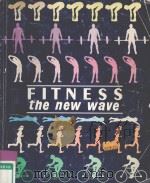
- FITNESS THE NEW WAVE SECOND EDITION
- 1986 HUNTER TEXTBOOKS INC.
-
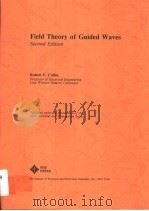
- FIELD THEORY OF GUIDED WAVES (上册) SECOND EDITION
- IEEE PRESS THE INSTITUTE OF ELECTRICAL AND ELECTRONICS ENGINEERS,INC.
-

- INTRODUCTION TO FIELD THEORY SECOND EDITION
- 1982 CAMBRIDGE UNIVERSITY PRESS
-
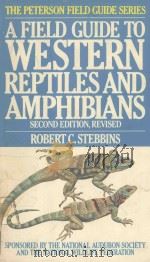
- A FIELD GUIDE TO WESTERN REPTILES AND AMPHIBIANS SECOND EDITION
- 1985 HOUGHTON MIFFLIN COMPANY
-

- Field singularities and wave analysis in continuum mechanics
- 1986 E. Horwood
-
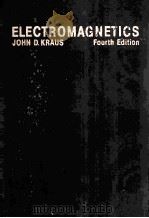
- ELECTROMAGNETICS FOURTH EDITION
- 1992 MCGRAW-HILL
-
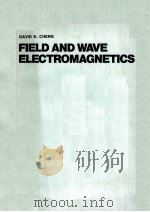
- FIFLD AND WAVE ELECTROMAGNETICS
- 1983 ADDISON-WESLEY PUBLISHING COMPANY
-
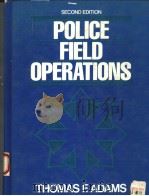
- POLICE FIELD OPERATIONS SECOND EDITION
- 1990 REGENTS/PRENTICE HALL
-
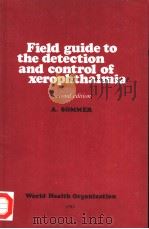
- FIELD GUIDE TO THE DETECTION AND CONTROL OF XEROPHTHALMIA SECOND EDITION
- 1982 WORLD HEALTH ORGANIZATION GENEVA
-
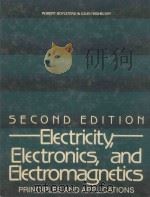
- ELECTRICITY,ELECTRONICS,AND ELECTROMAGNETICS PRINCIPLES AND APPLICATIONS SECOND EDITION
- 1983 PRENTICE-HALL,INC
-
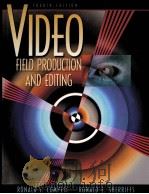
- VIDEO FIELD PRODUCTION AND EDITION FOURTH EDITION
- 1997 ALLYN AND RACON
-
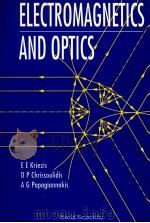
- ELECTROMAGNETICS AND OPTICS
- 1992 World Scientific Publishing Co.Pte.Ltd
提示:百度云已更名为百度网盘(百度盘),天翼云盘、微盘下载地址……暂未提供。➥ PDF文字可复制化或转WORD

